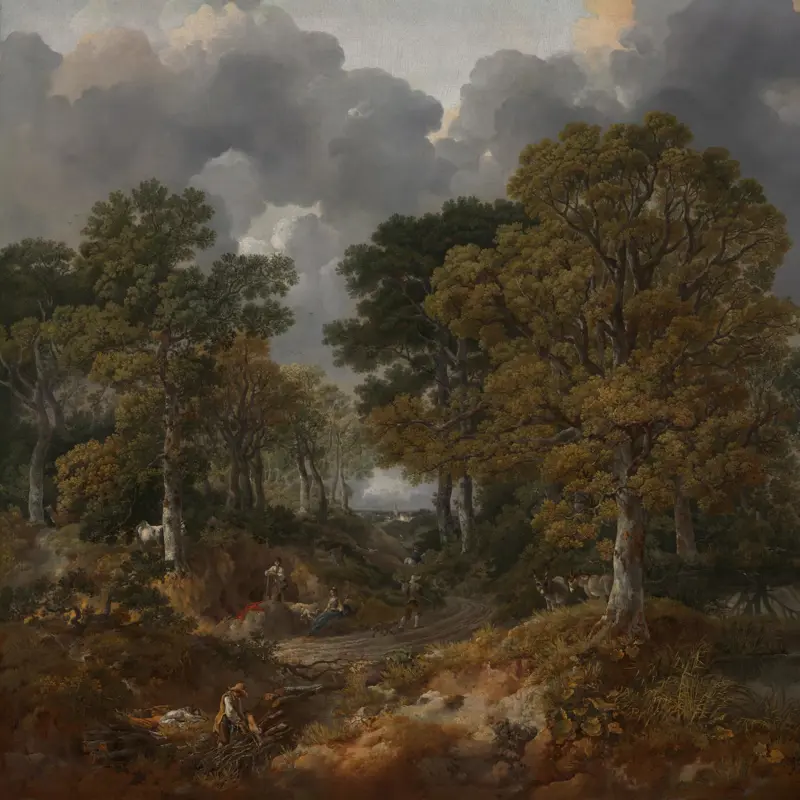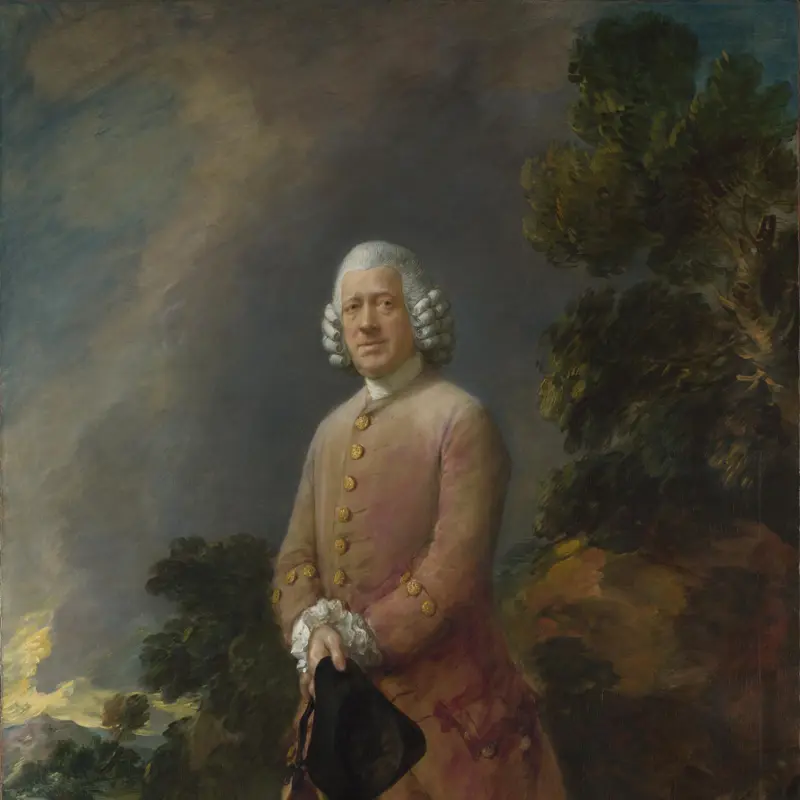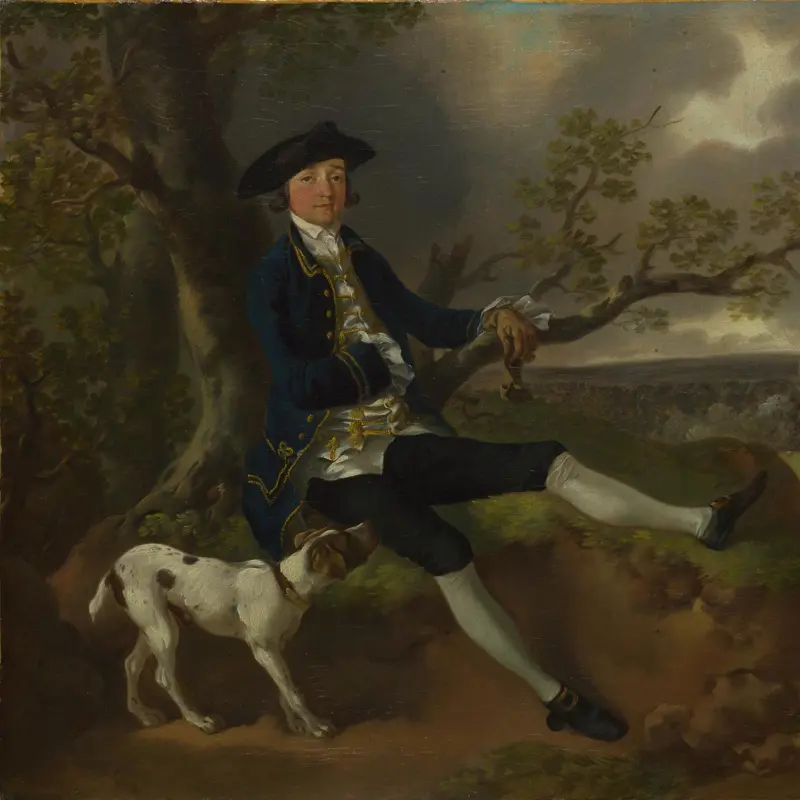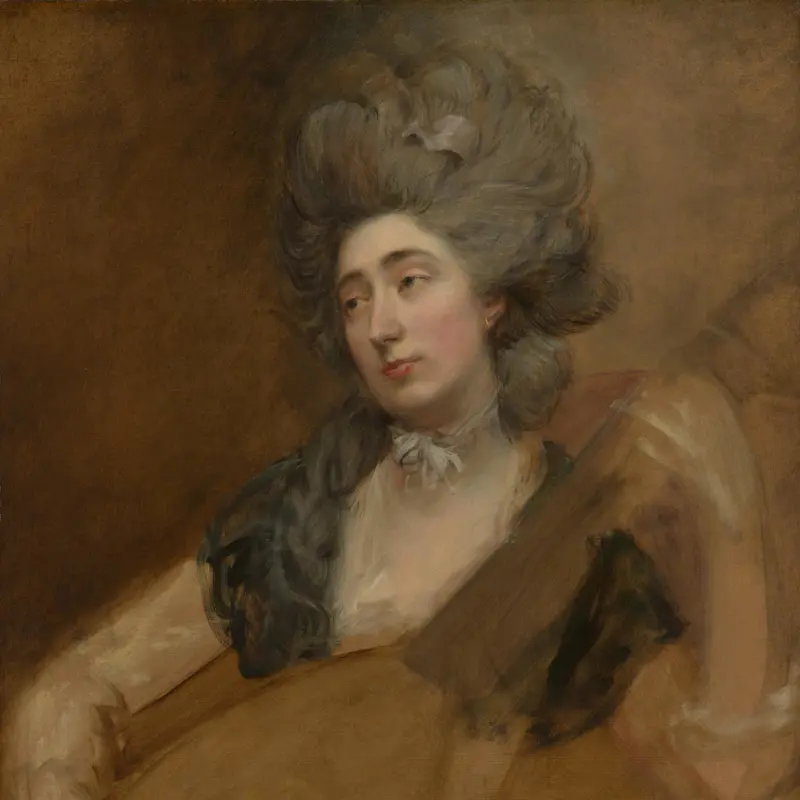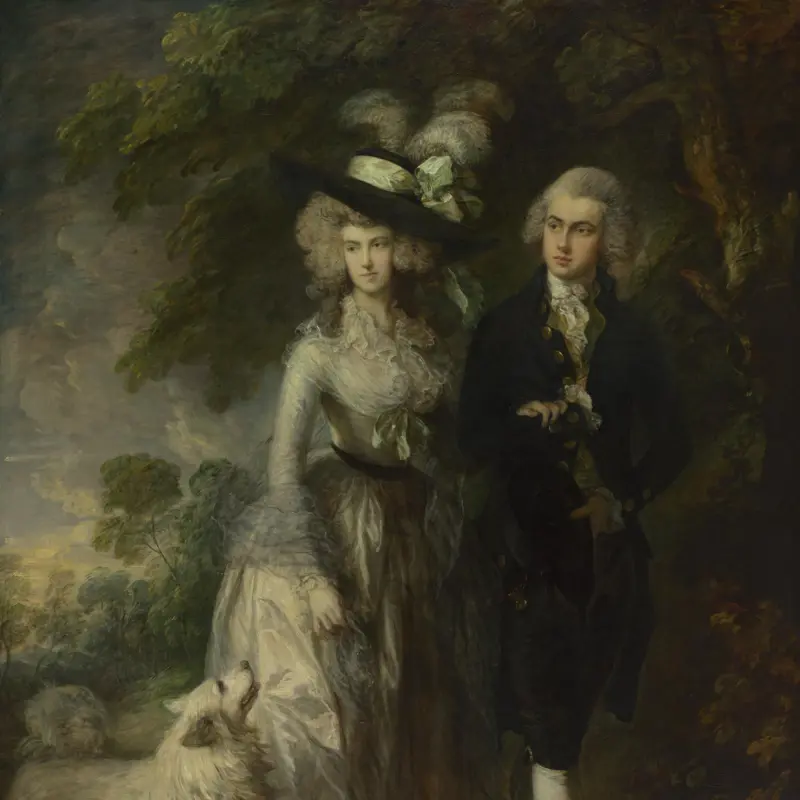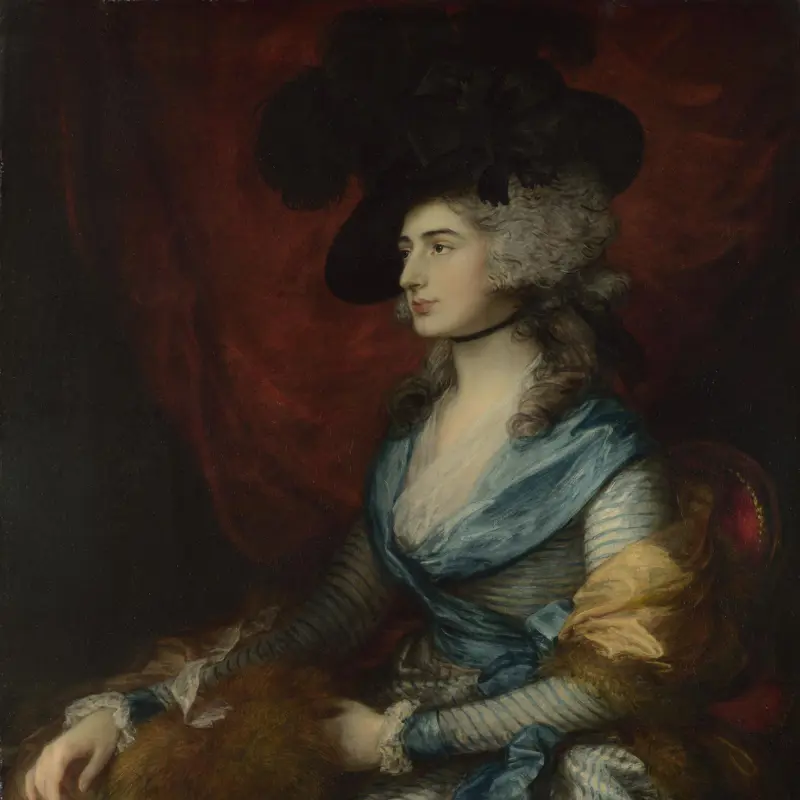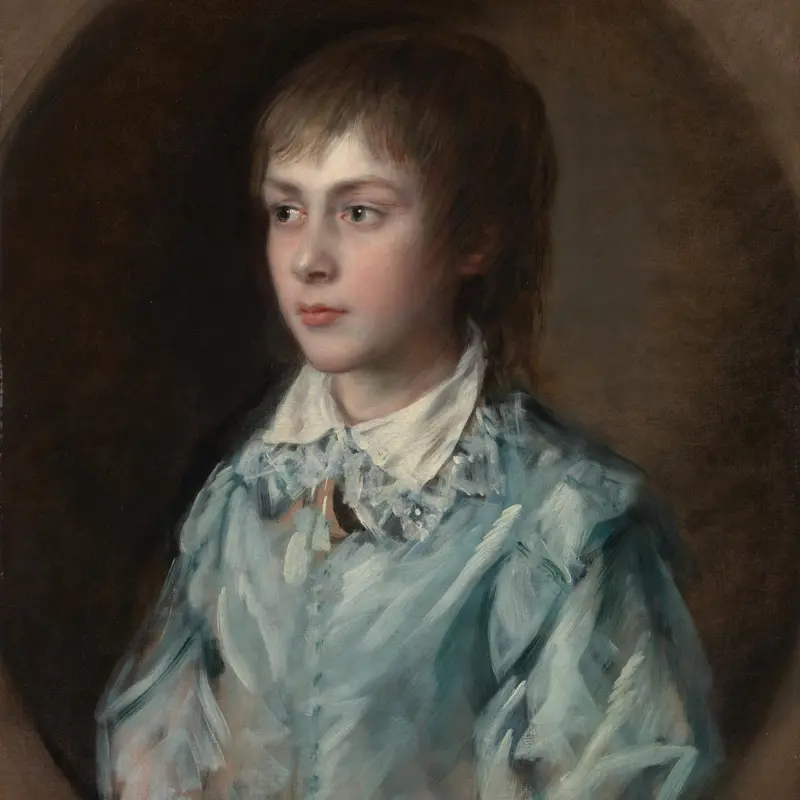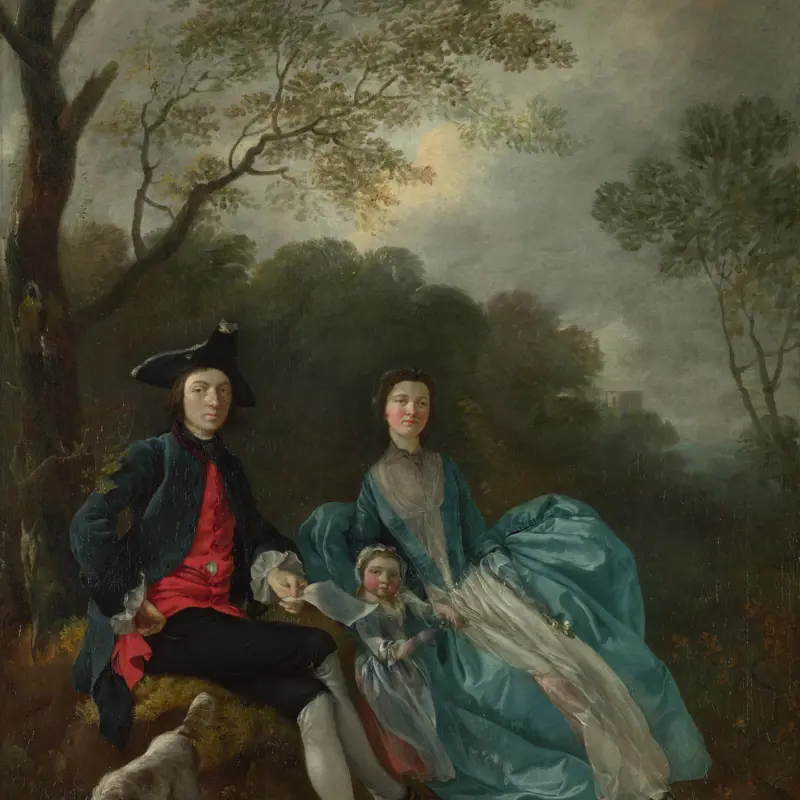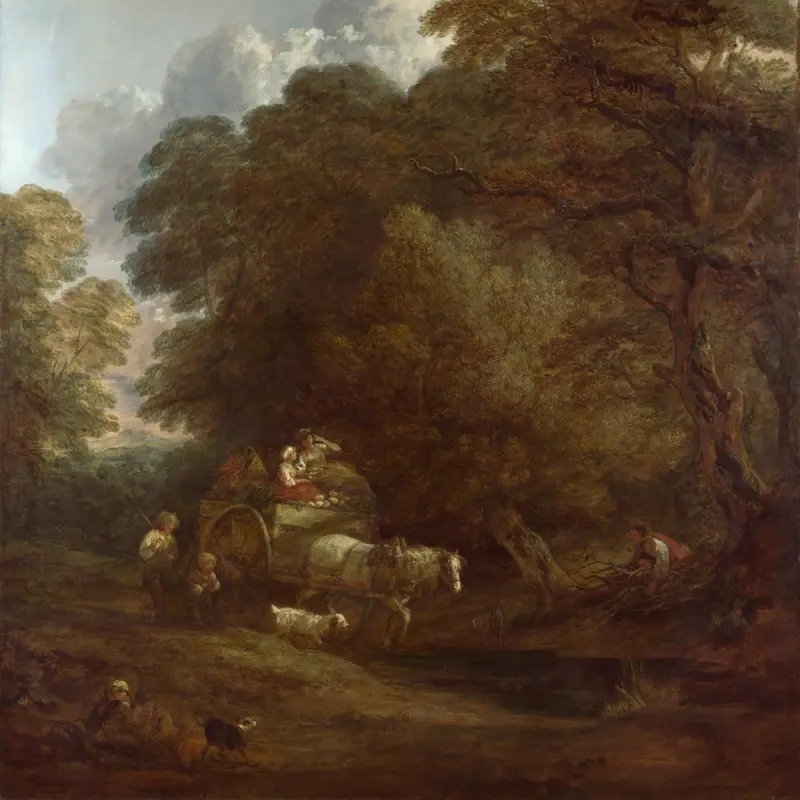Thomas Gainsborough, 'The Painter's Daughters with a Cat', probably about 1760-1
About the work
Overview
This portrait of Gainsborough’s daughters is likely to have been painted in Bath a year or so after the family moved there in late 1759. Mary appears to be about ten or eleven years old, and Margaret about eight or nine. Margaret leans her forehead back against her sister’s cheek as she holds their barely sketched-in cat, while Mary wraps her arms around her little sister, partly to help her with the writhing cat – whose tail she appears to pull – but also in a moving gesture of tenderness. No other portrait of this date conveys so strongly the sense that it is painted from life.
Although the faces have been painted, most of the picture is unfinished. The feathery pattern of gold, blue and grey brushstrokes that surrounds the girls seems to suggest storm clouds, sun and woodland.
Key facts
Details
- Full title
- The Painter's Daughters with a Cat
- Artist
- Thomas Gainsborough
- Artist dates
- 1727 - 1788
- Date made
- probably about 1760-1
- Medium and support
- oil on canvas
- Dimensions
- 75.6 × 62.9 cm
- Acquisition credit
- Bought, 1923
- Inventory number
- NG3812
- Location
- Room 34
- Collection
- Main Collection
- Frame
- 18th-century English Frame
Provenance
Additional information
Text extracted from the ‘Provenance’ section of the catalogue entry in Judy Egerton, ‘National Gallery Catalogues: The British Paintings’, London 2000; for further information, see the full catalogue entry.
Exhibition history
-
2018Gainsborough's Family AlbumNational Portrait Gallery (London)22 November 2018 - 3 February 2019Princeton University Art Museum23 February 2019 - 9 June 2019
-
2022Berührende Formen. Johann Gottfried SchadowAlte Nationalgalerie (Berlin)21 October 2022 - 19 February 2023
-
2022Fruits of the Spirit: Art from the HeartThe National Gallery (London)November 2022 - 9999
Bibliography
-
1923W.T. Whitley, 'The Gainsborough Family Portraits', The Studio, 1923, pp. 162-7
-
1946Davies, Martin, National Gallery Catalogues: British School, London 1946
-
1946M. Davies, Paintings and Drawings on the Backs of National Gallery Pictures, London 1946
-
1953E.K. Waterhouse, Painting in Britain 1530-1790, London 1953
-
1959Davies, Martin, National Gallery Catalogues: British School, 2nd edn (revised), London 1959
-
1959Musée des arts décoratifs, Le siècle de l'élégance: La demeure anglaise au XVIIIe siècle, Paris 1959
-
1975M. Levey, Gainsborough: The Painter's Daughters chasing a Butterfly (exh. cat. The National Gallery, 9 October - 23 November 1975), London 1975
-
1991D. Tyler, 'Thomas Gainsborough's Daughters', Gainsborough's House Society Annual Report, 1991, pp. 50-66
-
1998J. Egerton, The British School, London 1998
-
2000Egerton, Judy, National Gallery Catalogues: The British Paintings, revised edn, London 2000
-
2001
C. Baker and T. Henry, The National Gallery: Complete Illustrated Catalogue, London 2001
-
2022S. Avery-Quash and A. Lepine (eds), Fruits of the Spirit: Art from the Heart, London 2022
About this record
If you know more about this work or have spotted an error, please contact us. Please note that exhibition histories are listed from 2009 onwards. Bibliographies may not be complete; more comprehensive information is available in the National Gallery Library.

